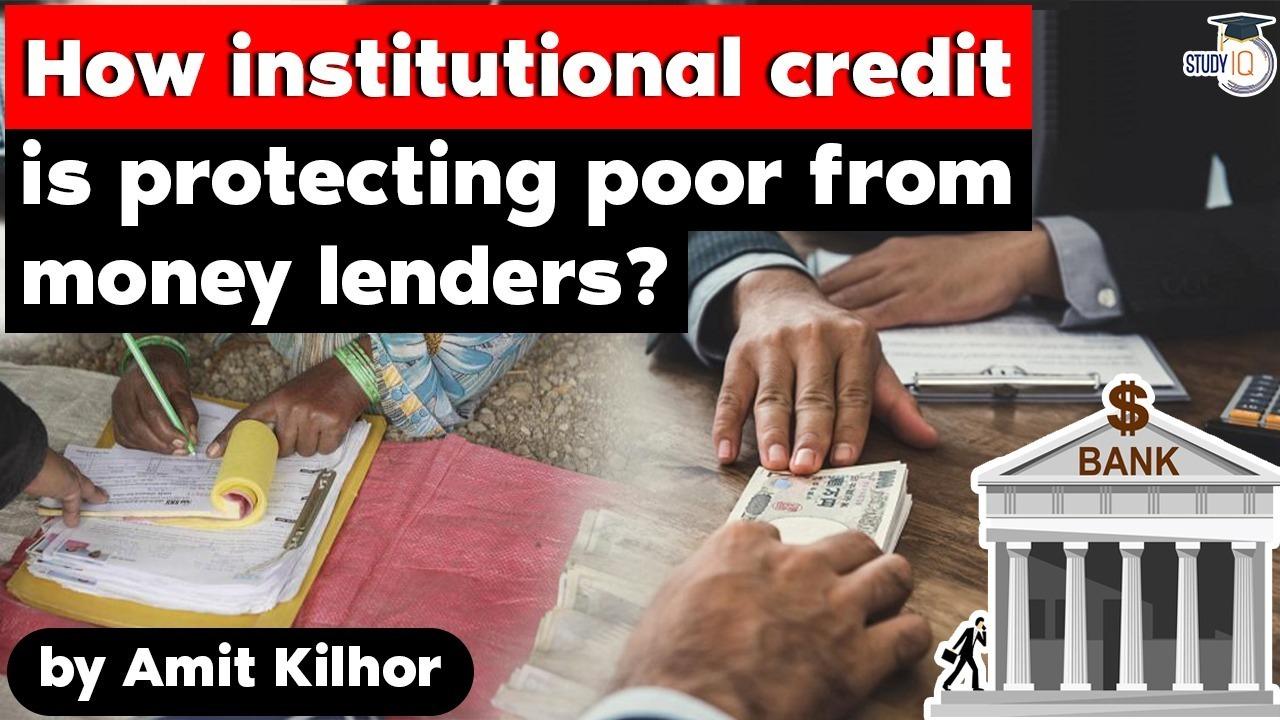Table of Contents
institutional credit and Money lenders
- Pradhan Mantri Jan Dhan Yojana (PMJDY, ) is a financial inclusion program of the Government of India open to Indian citizens that aims to expand affordable access to financial services such as bank accounts, remittances, credit, insurance and pensions.

- Financial inclusion is defined as the availability and equality of opportunities to access financial services.
- It refers to a process by which individuals and businesses can access appropriate, affordable, and timely financial products and services. These include banking, loan, equity, and insurance products

- More and more poor households in India now have access to institutional sources of credit, reveals the latest round of the All India Debt and Investment Survey (2019) released by the Ministry of Statistics and Programme Implementation earlier this month.

- The data shows that in the last couple of years, this enhanced institutional credit has led to a decrease in usury, a common practice in rural India, in which poor households are charged exorbitant interest rates on loans they get from traditional moneylenders.

- According to the survey, in 2018, institutional credit amounted to about 66 per cent of the total outstanding credit in rural areas, the highest since Independence.

- In sharp contrast, nearly five decades ago in 1971, institutional credit was available to hardly 29 per cent of the households in India’s rural areas.
- The survey, however, notes that the change has not occurred uniformly everywhere. In certain states, non-institutional creditors still dominate the lending business, but the trend is shifting downwards there too.
- As on 30 June 2018, non-institutional financiers, mostly professional money lenders and relatives, accounted for about 34 per cent of the total credit in rural India, the survey states.
- But in states such as Andhra Pradesh, Telangana and Bihar, they still accounted for more than 50 per cent of the total outstanding loans.
- Even in Jharkhand (40.6 per cent), Odisha (40.8 per cent), Rajasthan (46.6 per cent), Uttar Pradesh (37.2 per cent) and Madhya Pradesh (34.4 per cent), non-institutional lending was a bit higher than the national average of 34 per cent in rural areas.
- Traditional moneylenders or sahukars have existed in Indian villages for centuries. These lenders charge a usurious amount of interest that often puts the debtor into a debt trap.
- According to the All India Rural Credit Survey conducted by the Reserve Bank of India in 1951, these money lenders accounted for about 70 per cent of the total rural credit at the time.
- The mere convenience of low or no collateral and availability made these lenders accessible to the poorest households in rural India and they faced no competition from organised banking even decades after India’s Independence.
- Until 1971, non-institutional credit accounted for over 70 per cent of rural India’s debt, which fell to 38 per cent by 1981 as effects of 1969 bank nationalisation started showing results, with bank branches being spread across the country.
- The debt survey notes that credit by scheduled commercial banks, which did not account for even a percent of rural India’s credit in 1951, have recorded a great jump. As of 2018, about 42 per cent of rural India’s credit was channelised through these banks, up from 25 per cent in 2012.
Latest Burning Issues | Free PDF






















 WhatsApp
WhatsApp